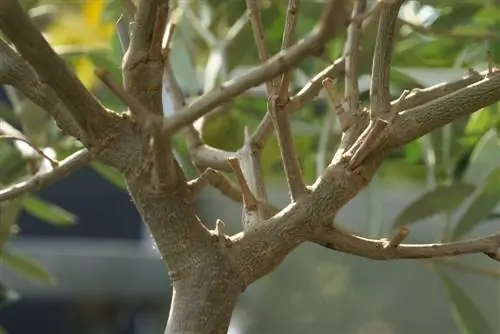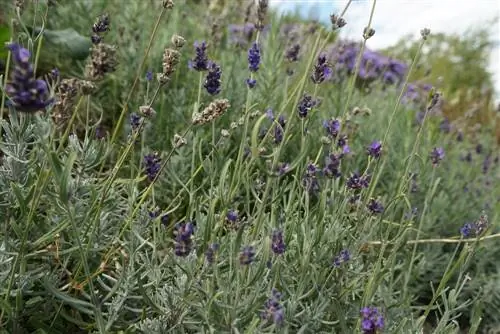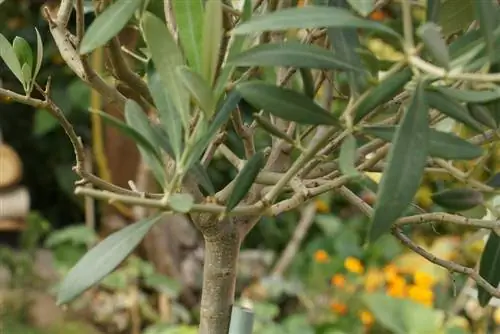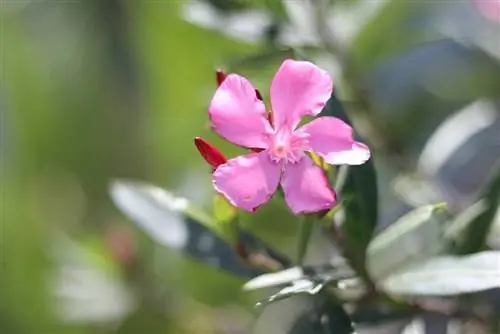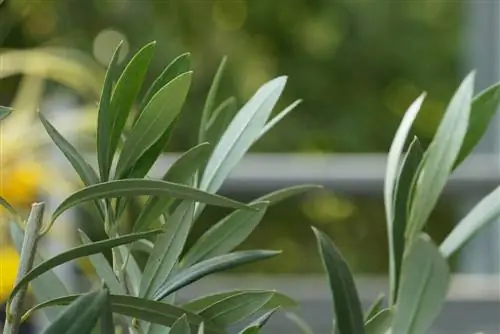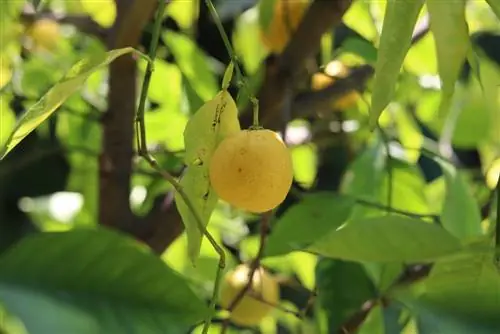- Author admin [email protected].
- Public 2023-12-17 03:39.
- Last modified 2025-06-01 06:48.
The general classification as a winter-hardy plant up to -10 degrees Celsius can only be seen as a rough guideline for the olive tree. In fact, various factors have a significant influence on the degree of frost hardiness of your olive tree. These include, among other things, the regional location of the garden as a macro location, the local microclimate, the age and the constitution of the plant. So that you can objectively assess how much cold your Olea europaea can actually withstand, we will look at all the influencing factors in detail below. Benefit from our tips on how to optimize the natural winter hardiness of your olive.
Winter hardiness zone serves as a guide
If you want to plant your olive tree or overwinter outdoors, there can be no doubt that it will survive the cold he althy and happy. A close look at the location of the garden and the winter climate there serves as an important clue. Since the experiences of the past one or two winters are too uncertain as a basis for decision-making, experienced hobby gardeners rely on historical weather data. Following the example of the USA, Europe was divided into geographical hardiness zones in the early 1980s.
Within the scale from Z1 to Z10, each zone covers a temperature range of 5.5 degrees Celsius. Z1 stands for a winter temperature minimum of below -45.5 degrees Celsius and Z10 for -1.1 degrees Celsius to +4.4 degrees Celsius. The area from Z5 to Z8, which is of interest to Central Europe, is further differentiated into half zones a and b.
The details at a glance:
- Z5a: -28.8 °C to -23.4 °C
- Z5b: -26.0 °C to -23.4 °C
- Z6a: -23.3 °C to -20.6 °C
- Z6b: -20.5 °C to -17.8 °C
- Z7a: - 17.7 °C to -15.0 °C
- Z7b: -14.9 °C to -12.3 °C
- Z8a: -12.2 °C to -9.5 °C
- Z8b: -9.4 °C to -6.7 °C
On the corresponding map, marked in color according to winter hardiness zones, you can see that the central habitats of the olive tree are within zone Z8 (- 6, 7 to 12, 2). Interestingly, regions in western North Rhine-Westphalia, in the Rhine Valley or along the Moselle are also included in these mild winter hardiness zones. If your garden is in these or similar locations, you can assume that your olive tree can spend the winter outdoors.
Macrolocation and microclimate define the boundaries
The assignment to a suitable winter hardiness zone is only one criterion if you want to assess the frost resistance of your olive tree. The table can only act on the basis of empirical average values, from which the actual course of the winter can differ significantly. After all, a location within Z8 or the western edge of Z7 is a good starting point for an informed decision. In addition, the microclimate within your garden is relevant. These factors signal that your olive tree is winter-proof even in the colder zones Z7a and Z7b:
- Location within a valley basin
- Location on a south-facing slope
- Spots in niches, corners or protected by dry stone walls
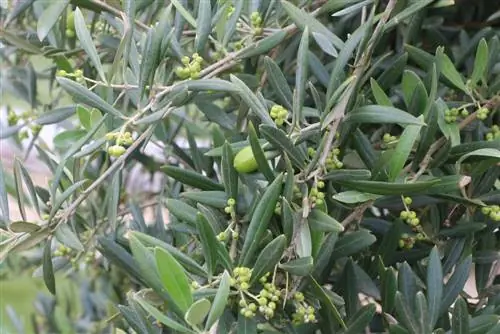
A detailed view is required here, especially outside mild winter zones of Z8 and higher. An olive tree that stands up to severe frost on a sheltered terrace slope dies a few meters away in a drafty corner. So it's very helpful if you know exactly the conditions in your garden and where the snow melts early or the ground stays frozen well into spring. However, it is just pious wishful thinking to rely on a mild microclimate and treat an olive tree in the winter hardiness zone Z6 and colder as a hardy plant.
Tip:
The degree of frost hardiness of the olive tree becomes less relevant when it comes to training and maintenance pruning. Only cut the crown into shape in spring when meteorologists no longer expect temperatures below freezing.
Other factors at a glance
In a garden within the correct hardiness zone and with the appropriate microclimate, essential criteria are met to cultivate an olive tree as a hardy plant. Since this is a valuable exotic species, be safe when assessing its frost tolerance by taking the following factors into account:
- Young trees grown in regional nurseries are more frost-resistant than adult, imported specimens
- A location with gradually falling temperatures in autumn and winter hardens the plant optimally
- Regions with very early and very late frosts significantly reduce winter hardiness
In addition, there are many hundreds of olive varieties that are naturally more or less hardy due to their origin. Scientists from the universities of Madrid and Cordoba have carried out detailed research from this perspective. Some varieties were able to emerge as explicitly winter-hardy. These include Cornicabra (hardy to -13 degrees Celsius), Arbequina (hardy to -11.8 degrees Celsius), Hojblanca (hardy to -9.9 degrees Celsius) and Empeltre (hardy to -9.5 degrees Celsius).
Winter protection optimizes chances of survival in the bed
North of the Alps, an olive tree is not only confronted with frosty temperatures. In addition, the wet and cold winter weather affects its winter hardiness, which is something the Mediterranean plant is not familiar with. By providing a planted olive tree in the bed with the following winter protection, it is better equipped for the rigors of the cold season:
- Cover the tree slice with a high layer of autumn leaves and brushwood
- Cover the crown and trunk with breathable, translucent fleece
- Tie your winter coat together to make it windproof
Foil of any kind is unsuitable for winter protection. No air exchange can take place underneath, whereupon condensation forms. The most stable winter hardiness comes to nothing if an olive tree dies due to rot and mold.
Tip:
In the pot, the root ball is less winter-hardy than an olive tree in a bed due to its exposed position. By wrapping the pot several times with bubble wrap and placing it on a wooden block, the plant can withstand cold temperatures down to -10 degrees Celsius in a wind-protected location.
Potassium lowers the freezing point in cell water
Preventive measures, such as winter protection in beds and pots, cushion the imponderables of external weather influences on winter hardiness. In addition, you can prepare an olive tree from the inside out for the capricious winter weather. This can be achieved by fertilizing specifically with potassium in the fall. Among other things, this nutrient is able to strengthen cell walls. In addition, potassium in cell water lowers the freezing point. The nutrient supply is modified accordingly in August/September with products such as Patentkali or Thomaskali. In the naturally managed ornamental garden, comfrey manure acts as an organic source of potassium.
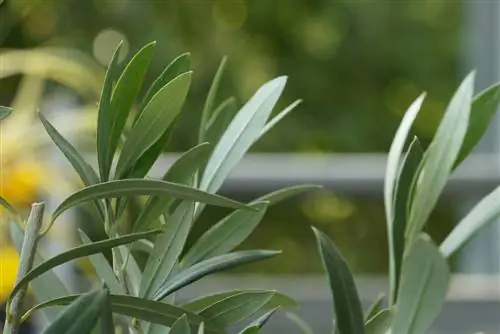
Conclusion
Subsuming the winter hardiness of an olive tree to the winter hardiness zone Z8 and a temperature minimum of -10 degrees Celsius does not do justice to the complex topic. In order to be able to make a well-founded assessment of how much cold the precious exotic animal can actually withstand, the factors explained here should be taken into account in the decision. Macrolocation, microclimate, weather patterns and olive variety are important criteria that have a decisive influence on frost resistance. There is also the option of winter protection measures, which are more extensive in the bucket than in the bed. You can also have a positive influence on the minimum temperature by preparing your olive tree for the rigors of winter with potassium fertilizer in autumn.

